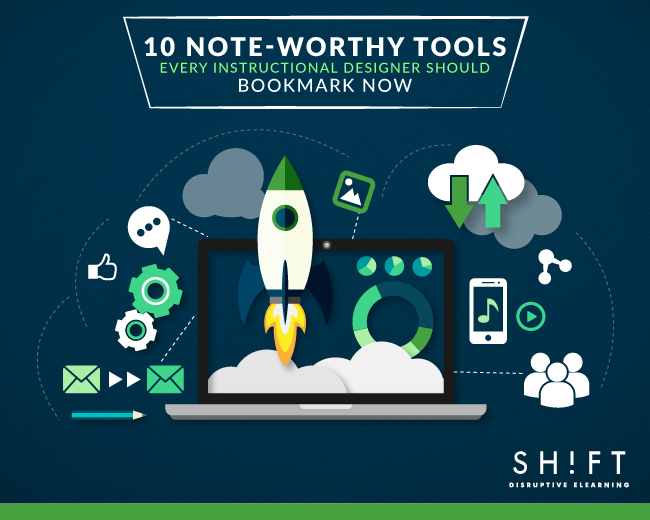Finding a tool that makes your job as an instructional designer even a little easier is kind of like finding fairy dust to sprinkle over your projects. Bibbity bobbity done! That’s how it feels, so why is it so hard to remember to save these tools for future use? I cannot count how many times I have found a great app only to draw a blank as to what was it called or how to found it when I need it again.
Here I present to you some of our favorite bookmarked websites and tools to make our eLearning design job easier. Save them all or just bookmark this article for all future eLearning design magic.

#1: StockSnap
Powerful images are a must piece for creating a great eLearning course. But finding just the right image can be a difficult task. Stock images are convenient, but the one big problem with them, though, is that they look, well, like stock photos. You can only take so many people overacting in front of a blank screen before you know you need something better. Thankfully, there are sites like StockSnap! This site provides dozens of quality images that are under the creative commons licensing, meaning they can be used, modified and distributed any way you need them to be without payment or attribution
#2: Tindddle
Tinder style swiping meets design convenience with Tindddle. Tindddle, allows you to swipe through hundreds of images quickly while favoriting the ones you like and hitting the ‘X’ for ones you don’t want to see again. This is a great way for eLearning designers to build a library of images they like and can pick from later on to get some inspiration. One small catch is that you need a Dribbble account to use this tool, but Dribbble is also a free resource, so it’s a win-win!
#3: Makerbook
Makerbook makes your job of finding FREE graphics, audio and mockups easier than ever. Makerbook has eight categories including fonts, textures and video with links to other free resources. Having all of these in one place will save you mega amounts of time when you need something fast and easy for a new project.
#4: The Noun Project
This collection of both free and premium graphics is kind of like a mega search engine just for icons. These small graphics can be used to enhance bulleted lists or break up a page or as creative hyperlinks within your courses. Most images are either free to use as long as you credit the source or you can purchase them for as little as $1.
#5: COLOURlovers Photocopa
Often a photo or set of photos serves as a theme for a course and finding colors that complement that imagery can really up the aesthetics of your project. ColourLovers is making this easier than ever with their Photocopa tool, which creates a palette based on a photo you upload. You can also use existing palettes on the site for an even easier process.
#6: ImagFlip
Gifs are a gift from the technology gods and can be used to make your boring, static visual designs come alive with humor and movement. Unfortunately, it can be difficult to find free ones that are of high quality and relate to your course's content. With ImagFlip, you can easily create your own DIY gifs for any occasion.
ImagFlip is an easy to use too! All you have to do is:
- Upload an image or video.
- Adjust the file with crop, resizing, flip and rotating tools if needed.
- Arrange photos or select the portion of the video you want to use.
- Select the speed for your animation and add a caption.
- Hit ‘generate’ and you’re done!
#7: Coggle
Elearning designers have to deal with complicated workflows, frequent SME meetings and intense brainstorm sessions. Taking these things and ideas and turning them into something real and concrete that other team members can understand is a major part of a designer’s job. Coggle makes this process easier with their mind-map creator that helps organize and analyze data visually. With this tool, you can even invite others to edit and collaborate and store your files as a pdf or on Google Drive.
#8: Trello
Whether you are an independent designer looking for personal organization or you form part of a large team at a company, Trello is your way to go. The Trello system includes boards, lists and cards that help you track all aspects of a project in a quick, visual way. Besides, seamless syncing between devices allows you to carry this indispensable tool wherever you go.
Read this tutorial: How to Effectively Use Trello for Project Management
#9: TypeGenius
Fonts can make or break a design and with Type Genius you can pick from available fonts and the tool will give you suggestions for typefaces that pair well. This Muno Creative project even includes graphics with the fonts side by side so you can see exactly how they will look.
Read: A 7-Step Typography Lesson for First-time eLearning Developers
#10: InVisionApp
Mockups save time and money by letting you see a basic version of your project before all the details and work go in. With InVision, you can quickly create interactive mockups that help you present to potential clients and your team. These prototype projects typically do a far better job than static images and PDF files.
All of these tools combined will get you creating eLearning designs faster, helping you win jobs and make your eLearning courses more effective and engaging.
Other reads you'll enjoy:
- Smart Ways to Become an eLearning Productivity Ninja
- eLearning Design Hacks to Keep Your Creative Mojo Flowing



